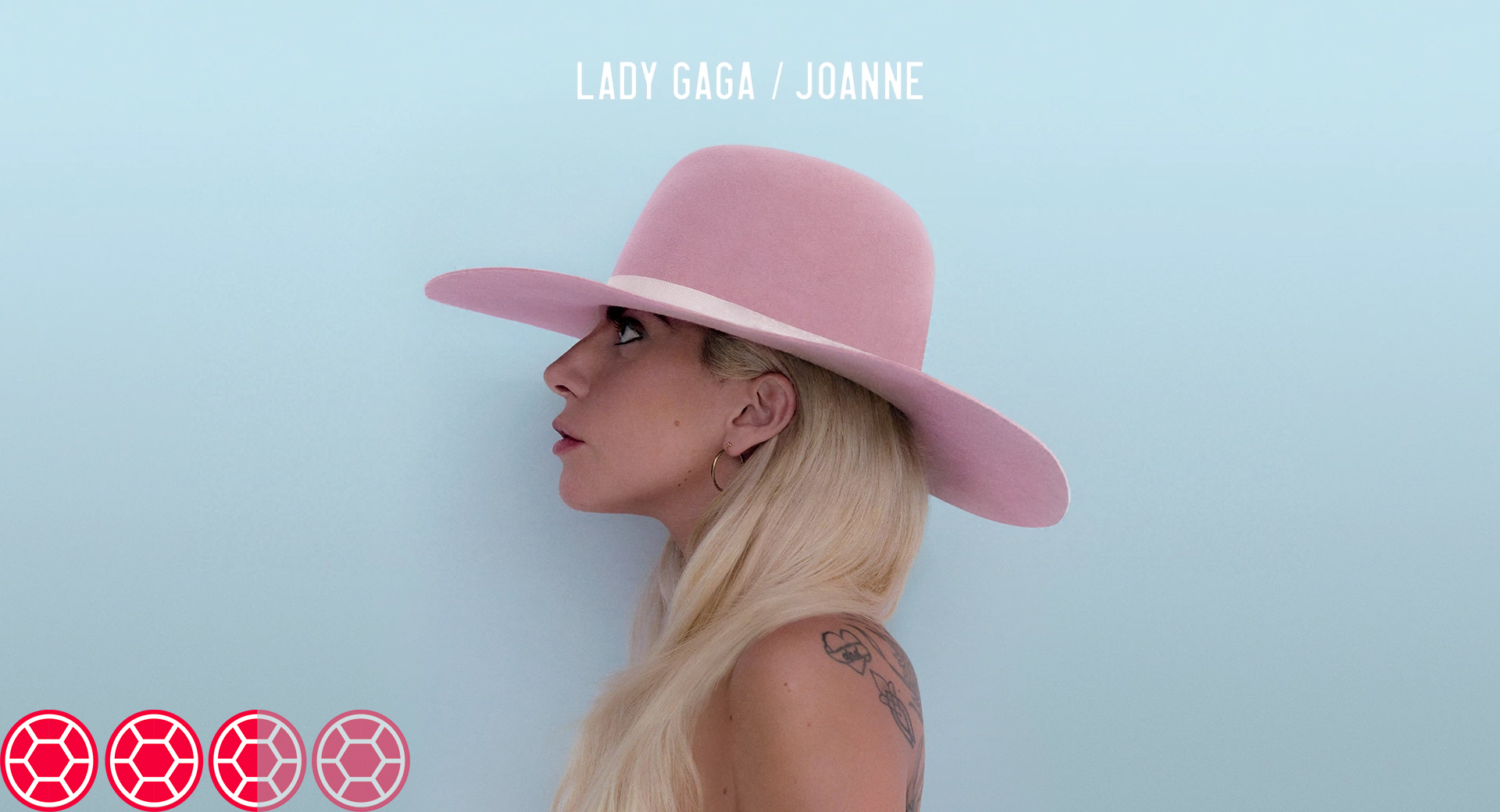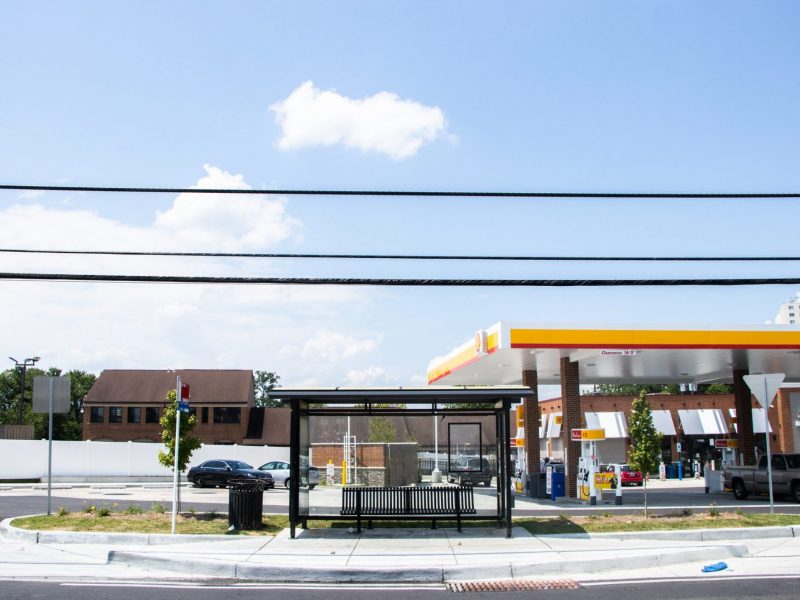With every album, Lady Gaga proves herself to be a musical shapeshifter.
Her first three records, or four, if you count her EP The Fame Monster, found Gaga toying with various types of electronic music. She originated with a bubbly form of electropop in The Fame, grew Gothic with shadowy Eurodance in both The Fame Monster and Born This Way, and then delved into a chaotic mesh of neon-splattered EDM in Artpop, her most gaudy work to date. In 2014, she took a small break from contemporary pop with Cheek to Cheek, her collection of jazz duets with Tony Bennett that found the New York-born songstress shedding heavy electronica for a band of brass and strings.
Now cue Joanne, her fifth studio album, released last Friday. On the record, Gaga concocts her most curious musical transformation yet: A hodgepodge of folk rock, country and Americana built on a foundation of rippling guitars and funky synths. So it goes without saying that Joanne is a puzzling marriage of disparate sounds. But it’s also her most personal album to date, marking a new era in her relatively young career — one that finds Gaga more concerned with her long-term legacy as a songwriter than her immediate relevancy on the charts.
From time to time, Gaga stumbles on Joanne. And, for some odd reason, the worst songs on the record have something in common: They’re all singles. “Perfect Illusion” has no business being the record’s debut single. The chorus, featuring Gaga wailing on a repetitive chorus, is exhaustingly relentless. Pair that with a grating key change and whatever potential the rock pop track had is completely soured, especially considering that it was her collaboration with Tame Impala’s Kevin Parker.
“Million Reasons” and “A-Yo,” Joanne‘s next two singles, would be great hits for someone like Miranda Lambert. But they feel entirely too safe for someone with Gaga’s reputation of risk-taking. They also, at times, feel wholly inauthentic. The problem here isn’t with the western sound; after all, one of Gaga’s best songs comes in the form of Born This Way‘s country-tinged “You and I.” But on those two singles, she operates with the pretense that she is actually a cowgirl. With more than a hint of country twang, Gaga croons about “Tearin’ up the gravel” on “A-Yo,” and on “Million Reasons,” the pop star is backed by songwriter Hillary Lindsey, best known for writing Carrie Underwood’s “Jesus, Take the Wheel,” as she sings “If I had a highway, I would run for the hills.” Coming from a multi-millionaire known for avant-garde high-fashion, such lyrics are eye-roll inducing.
Luckily, a good portion of the record avoids such pitfalls. Throughout all of Joanne, Gaga forgoes the vocal modulation prevalent in nearly all of her pop discography for raw vocals that vibrate with her theatrical vibrato and slightly nasal quality. It’s an artistic decision that makes perfect sense given the personal nature of the record that she revealed in an interview with T Magazine.
“There are two sides of me. There’s a side of me that’s a true rebel, and another side of me that’s my father’s daughter,” Gaga said. “And so this album, it doesn’t lean necessarily in a particular direction, which is why the album title is Joanne. This is my middle name. This is the middle and the center of me, and Joanne, my father’s sister who died when she was 19, that was the year I decided I was really going to go for it.”
In the album’s title track, Gaga delivers one of her most heartfelt and catchy choruses as she sings “Girl/ Where do you think you’re goin’?/ Where do you think you’re goin’/ Goin’, girl?” It’s a chorus that comes with a dual meaning — Gaga is both lamenting the death of her aunt and reflecting on the uncertainty she felt as a young artist barely scraping by in the underground New York City club scene — giving the listener a rare look into an icon who used outlandish outfits as a shield from the prying eyes of the world.
One of the album’s best chances for a smash hit, “Diamond Heart” is a Bruce Springsteen-esque bop that delves deeper into Gaga’s past when she was just known as Stefani Joanne Angelina Germanotta. “Young, wild, American/ Lookin’ to be somethin’/ Out of school go-go’n/ For a hundred or two,” she sings, a reference to how she dropped out of NYU’s Tisch School of the Arts and began to make a name for herself in small-scale venues. But the song excels because of a chorus (“I might not be flawless, but you know/ I got a diamond heart”) that is consummate Gaga — empowering, hook-driven and wrapped with intriguing symbolism.
A few other tracks rely less on introspection and more on sheer musical quality. “Hey Girl,” Gaga’s girl-power duet with Florence Welch, mixes funk with swirling synths that fluctuate between sinister and flowery. “John Wayne” starts out with a thudding country beat until it delves into furious electronica on the chorus as Gaga belts “Baby, let’s get high/ John Wayne.” And on “Dancin’ In Circles,” her collaboration with Beck, Gaga returns to her carnal pop roots as she slyly sings “I lay around, touch myself to pass the time.”
Is Joanne Gaga’s best album? No. But is it bad? Also no. It does feel a bit disjointed and try-hard at times. But that is to be expected from a pop star who attempts to stuff each record with such high levels of grandeur and thematic elements that she often goes overboard. That’s why Gaga is one of our generation’s most dynamic artists. She becomes enveloped in a crazy idea and whole-heartedly matches her music and fashion to it. Joanne, her first pop album since 2013’s divisive Artpop, shows that Gaga will never let go of that visceral artistic process, even if the final product isn’t the most radio friendly. And in a time when much of pop music seems coldly calculated, that is something to be appreciated.



